In 2018, Dan Macarin discussed Weta FX‘s involvement in Deadpool 2, and since then, he has contributed to various projects like Aquaman, Lady and the Tramp, The Suicide Squad, and Guardians of the Galaxy Vol. 3.
How did you and Weta FX get involved on this show?
Weta FX has been a part of the Deadpool series from the very beginning. Ryan Reynolds has pushed for people to connect with this character and translating emotions digitally is something that Weta FX does well. I was brought on as Visual Effects Supervisor on Deadpool 2 and through our relationship with Marvel and Ryan’s Maximum Effort team, we were able to continue this work on the third film.
What was your feeling to be back on a Deadpool show?
I was really excited to be part of this film. A lot of us are pure fans of the characters, so being asked to join Deadpool & Wolverine is a dream.
How was the collaboration with Director Shawn Levy and VFX Supervisor Swen Gilberg?
Having been on the last two films, we had a great understanding of what Ryan wanted to do with the character and how far to push his facial emotion and comedic timing, but with this being the first Deadpool film for Shawn and Swen, we had to make sure that everyone was happy with the process and that we were achieving the performance they wanted as well. Shawn and Swen were fantastic in their ability to express what they were after and really worked so well with us and Ryan that it all came together very quickly. If a shot needed an adjustment, Shawn and Ryan would send us videos from their phones performing the line in the way they wanted. Swen gave us a lot of trust that we knew the character and were able to get what the filmmakers were after.
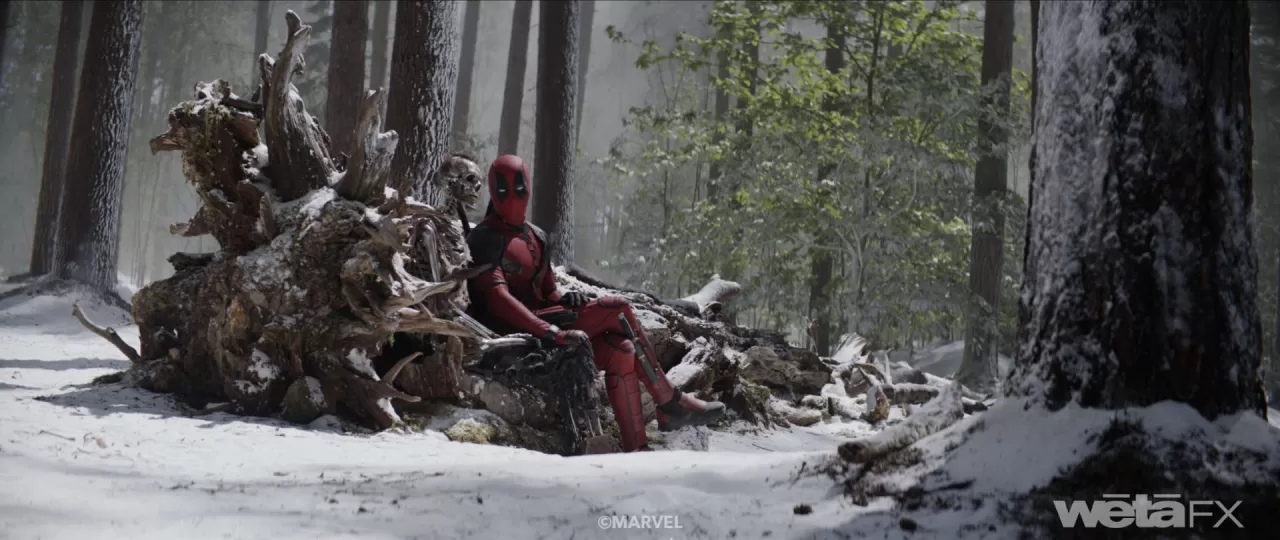
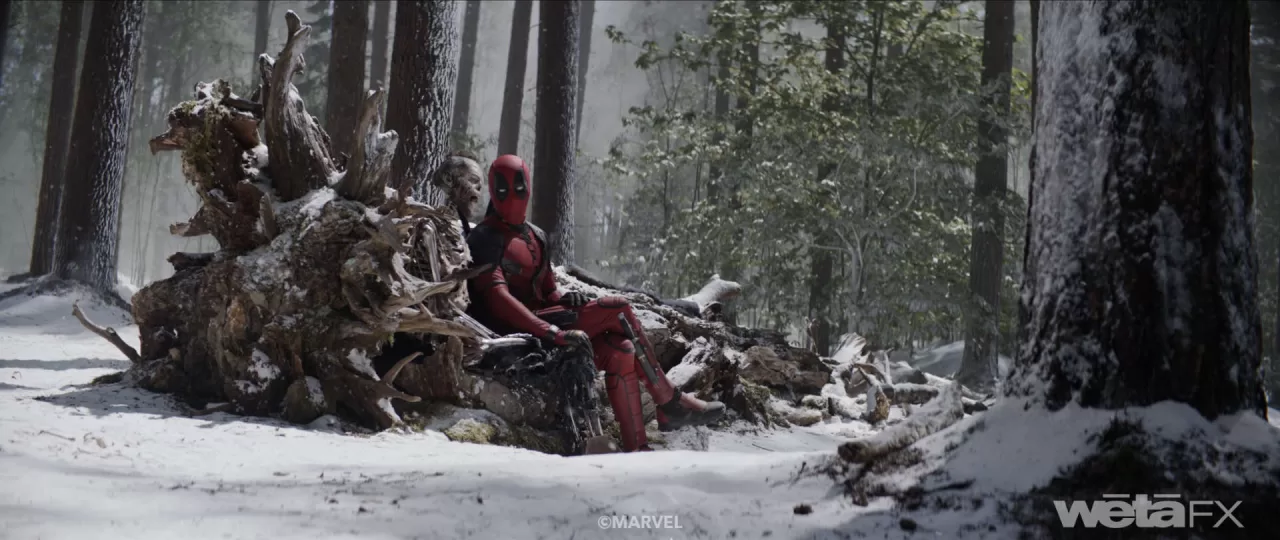
How did you organize the work with your VFX Producer?
As a base, our producer James Worley and I divided the work based on a system we setup on Deadpool 2 around shot complexity. Shots are then grouped by sequence or angles. As with any Marvel project, there are a number of vendors with shared shots and marketing material that often have earlier deadlines, so we’ll try to hit those first so that we keep the train moving as smoothly as we can.
What are the sequences made by Weta FX?
As we were responsible for animating Deadpool’s mask, from subtle movements to large expressions, we worked on nearly every sequence in the film. This involved us doing the facial work, then sending new plates to other vendors, or having them send us their footage so we could go in and do the final comps. But it wasn’t just Deadpool’s mask – our work started in the opening credits, where we replaced Logan’s skull with a more zombified version of Wolverine and having Deadpool interact with it, eventually ripping the skin off to reveal Hugh Jackman’s credit. We added weather effects like snow and mist to shots as well as timedoors and TVA weapons. We also did many scenes in the void, going on a road trip with the Honda Odessey, as well as animating Wolverine’s iconic yellow mask.
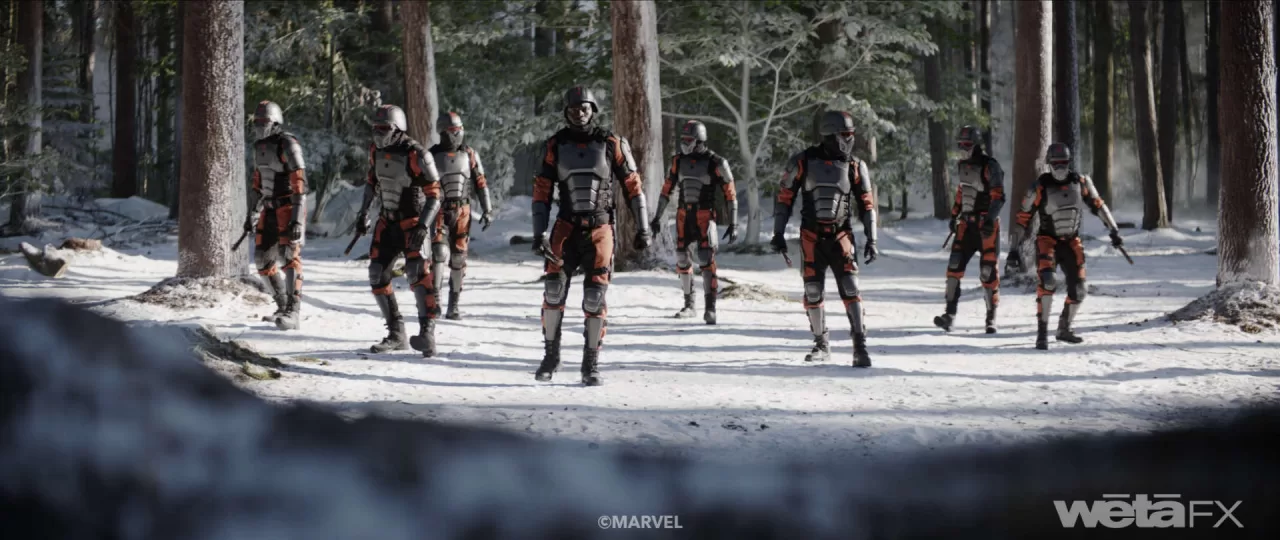

What techniques were used to animate Deadpool’s facial expressions under the mask?
We have developed a facial system in Nuke over the last three Deadpool movies. We use a traditional facial setup with nearly 128 facial shapes that we use to drive the mask. We have a ML layer for environmental noise and sound from other actors that we combine with the artist-driven Deadpool motions. We adjust the speed and structure of the movements to match the fabric’s range of stretch and the pressure it takes to move those areas.
How did the VFX artists ensure the seamless integration of digital and practical effects for Deadpool’s mask?
Our idea was always to keep as much of the practical as possible. Ryan has a lot of subtle movements that we’d hate to lose. With this in mind we apply our facial directly to the plates. We don’t do digi-double replacements of Deadpool or Wolverine on any plate we touch. Our system essentially warps, rebuilds, and relights the plate using our facial system to be as true to Ryan’s performance as we can. VFX artists are in charge of both the facial animation as well as the integration so it’s the same person doing both and they know where they break the plate and how far to push it or how much they need to rebuild.
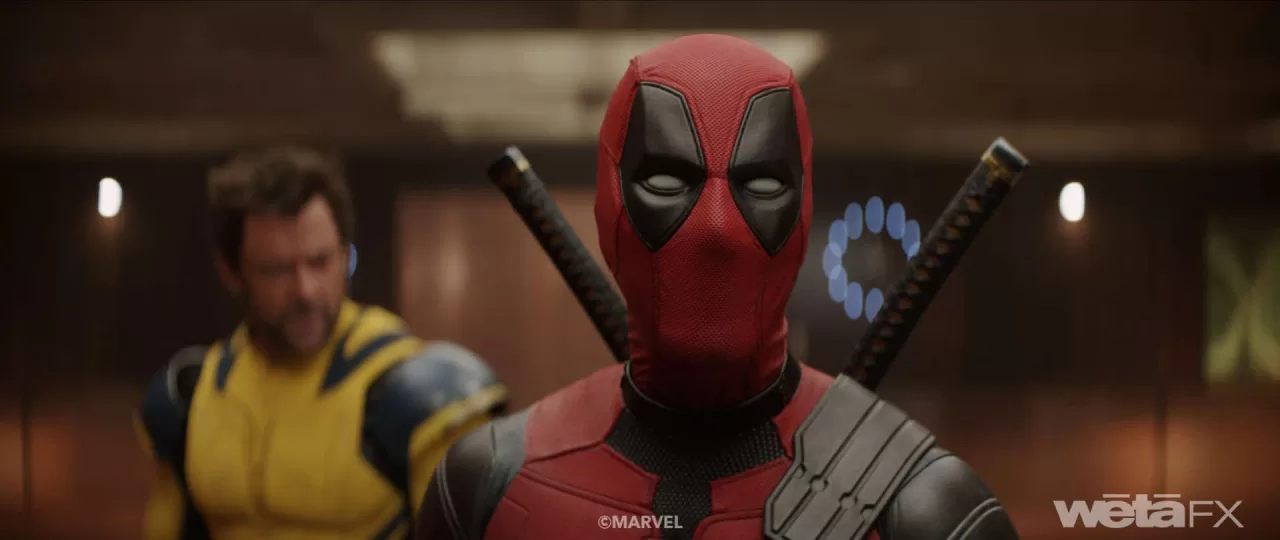
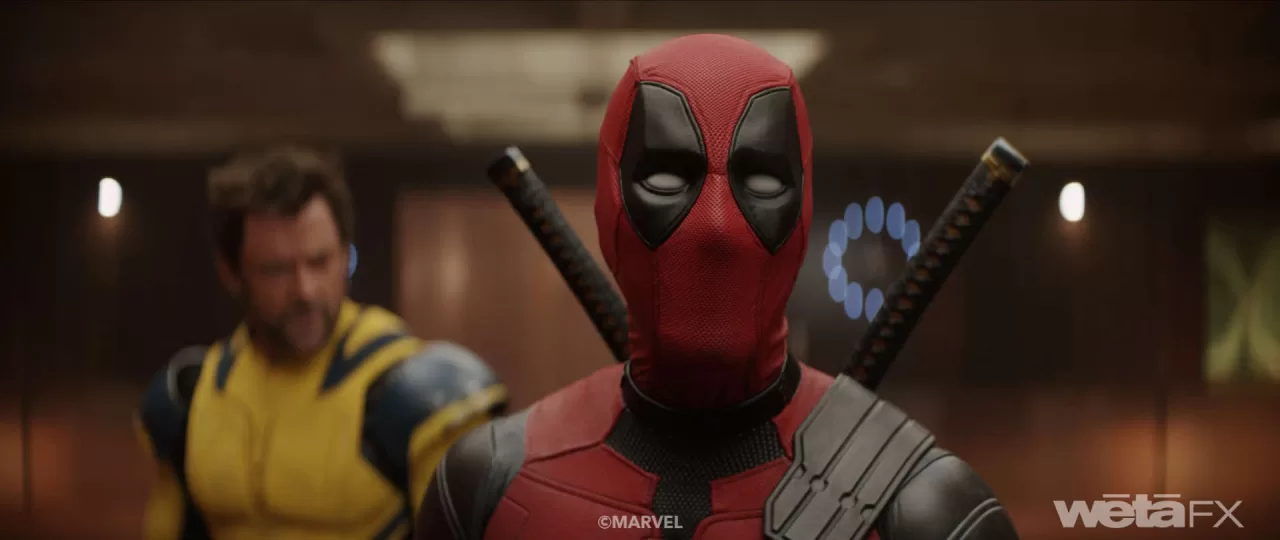
How was motion capture used to enhance Deadpool’s facial animations?
We don’t use motion capture for Deadpool or Wolverine in this film. Ryan is in the suit and we keep the plate, so he doesn’t have the normal facial capture camera rig when he’s performing. We use reference that Ryan will send to us during reviews as a guide in how to do the facial performance, but the rest is purely artist driven.
What challenges did your team face in preserving Ryan Reynolds’ performance through digital enhancements?
Comedic timing is always tricky. Matching Ryan’s personal style of timing requires massive amounts of study. Watching his shot reference when we have it and really just trying to find what makes people connect with him in his performance – this is something our artists are constantly striving to perfect. One of the main challenges we have is the speed in which Ryan moves his eyes and his brows. We can match his timing perfectly, but it will make the mask look like an animated character because it’s too fast and too fluid. The fabric of the mask doesn’t move that way. Our challenge is transferring Ryan’s timing and intent into something that still feels real within the mask.
How did the VFX team design the transitions between Deadpool’s digital and real face?
The artists adjust the timing, the movement, the amount of muscle tension and wiggle using a formula we have designed over the course of the last two Deadpool movies. We have most of the movements down to a science allowing our artists to focus more on performance and less on the technical transition.
What role did lighting and texture play in creating realistic skin and mask effects for Deadpool?
We continue to use the practical mask. We don’t texture or do traditional lighting passes or renders. We relight in 2D to adjust two main issues. At times, we want to make wrinkles or shapes more readable. The other is that sometimes plate lighting causes one side of Deadpool’s face to have light and make the movements more readable than the other side, giving him a more asymmetrical face. While this can be funny at times, it isn’t the performance we want for the scene. With this in mind we will add more light to the mask so that we can keep the intent of Ryan’s performance.
How was the iconic look of Wolverine’s mask digitally created and animated?
Wolverine’s mask was practical. We applied a similar approach to Wolverine’s mask that we do for Deadpool.
What specific techniques were used to convey Wolverine’s emotions through his mask?
Aligning the mask’s motion to the rest of Hugh’s facial performance, we focused mostly on the eyes and the inner brow of his mask. This enabled us to give him a bit more of a classic anger to his facial expression that Hugh does incredibly well.
What challenges arose in animating Wolverine’s facial movements when wearing the mask?
Part of Wolverine’s mask is metal and those sections had to remain almost entirely rigid so that his mask would not feel over animated.
How did the VFX team manage the visual consistency of Wolverine’s claws during close-up shots?
The team on set have a pretty amazing prop that Hugh can hold for reference on the claws. As they are very reflective, it gave us a near perfect guide of what to match.
What tools and software were essential in the creation of facial animations for Deadpool and Wolverine?
We used Nuke and Maya.
What were the main challenges faced when creating set extensions for the film’s diverse environments, and how were they overcome?
The main challenge was figuring out what to fill the Void with. We have so many props from working on Marvel shows and we could put almost anything in there, but we had to narrow it down to the pieces that make the most sense for the sequence and that took a bit of time. There are a lot of easter eggs in there and some that amazingly haven’t been caught yet. Finding ways to transition from different environments but make it feel continuous was also difficult. We had to take the characters from a corn field, to a desert, to a forest within 6-8 shots.
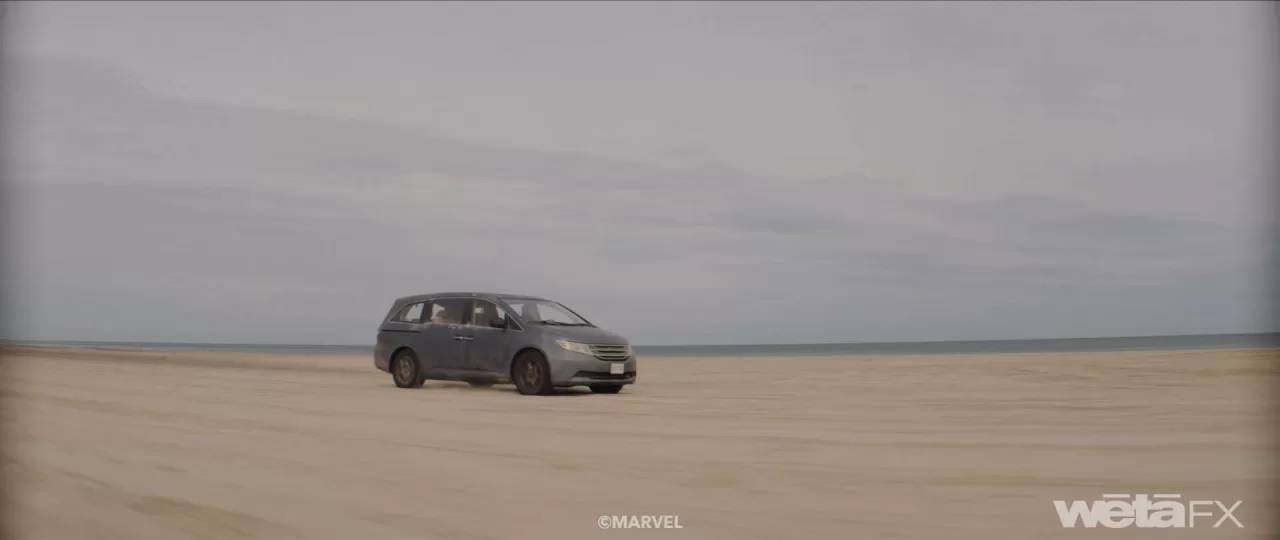
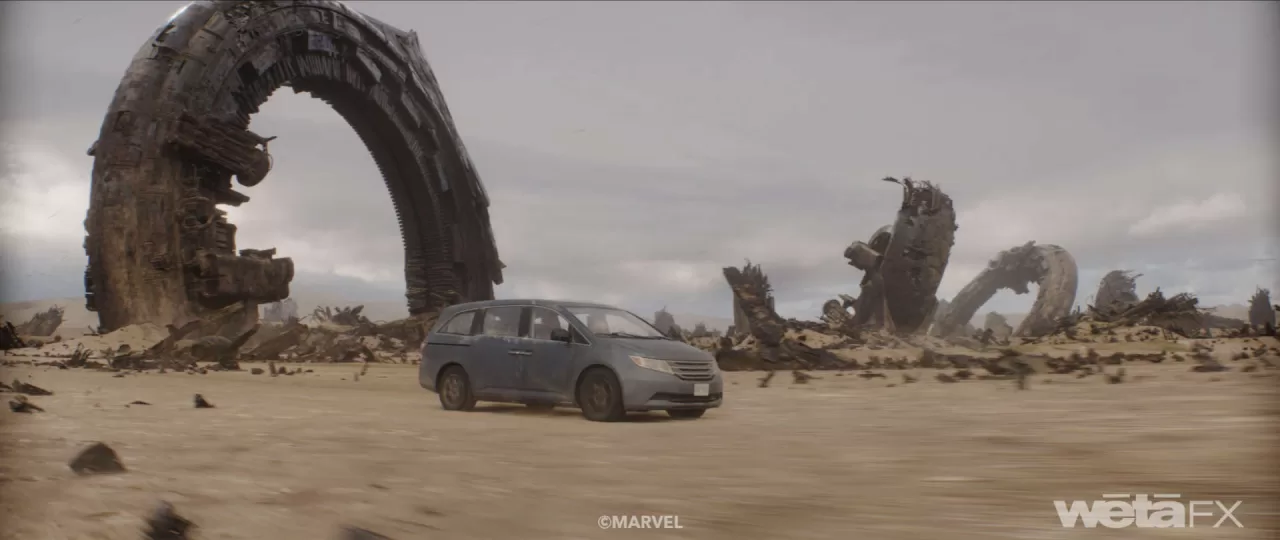
Which environment was the most complicate to create and why?
The corn field – we were mixing a lot of digital corn with plate footage that had wind pushing the corn stalks around, so that was a bit tricky to match and integrate the digital corn with.
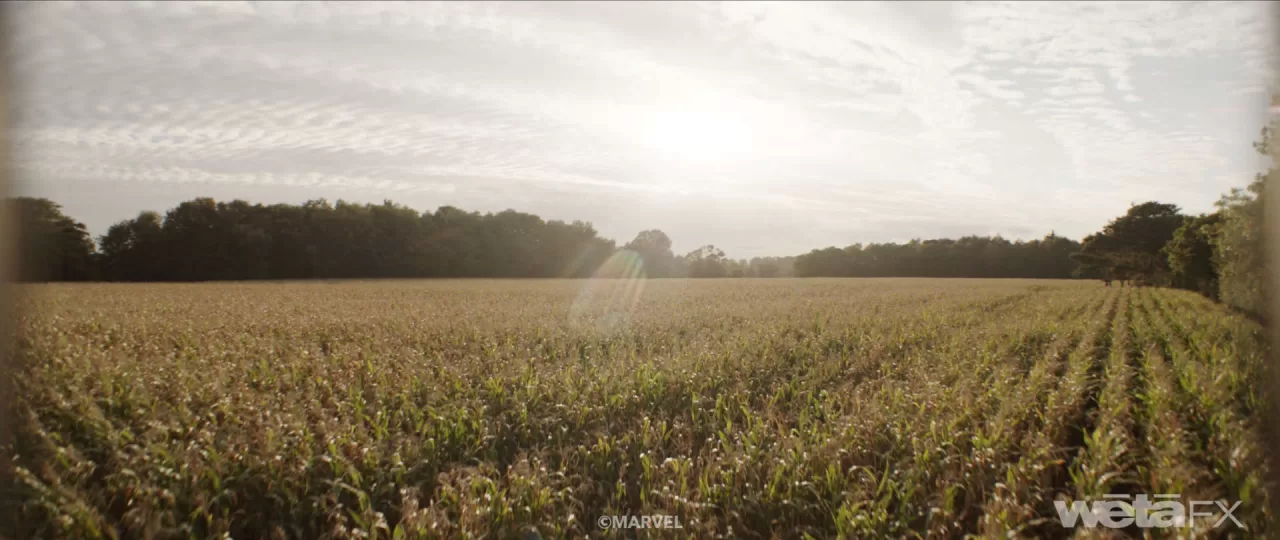
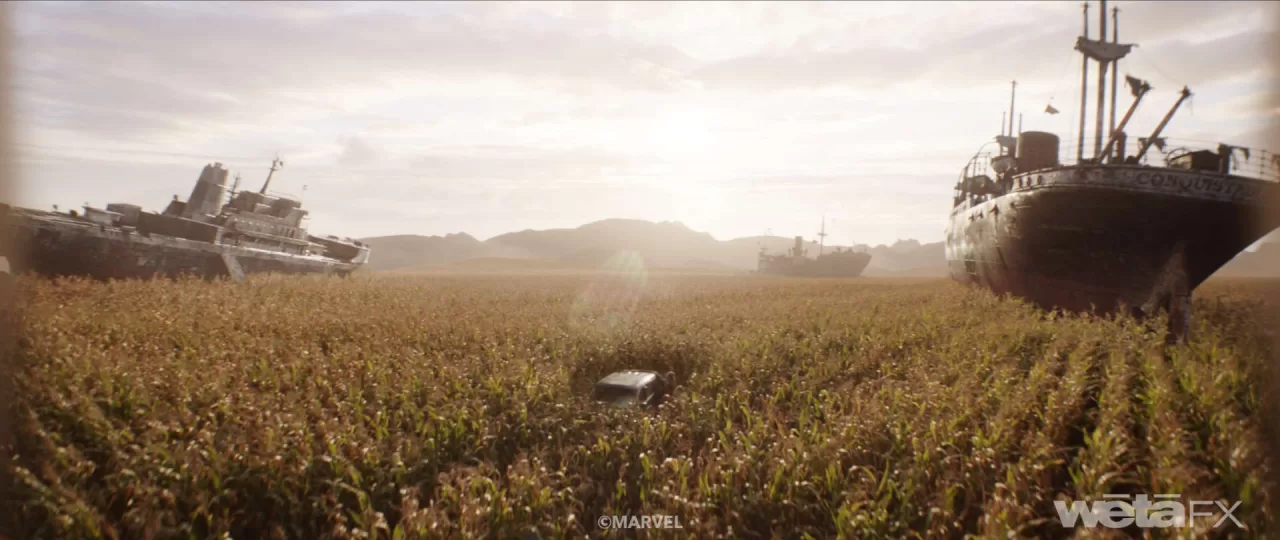
Were there any memorable moments or scenes from the film that you found particularly rewarding or challenging to work on from a visual effects standpoint?
The first shot that we animated Wolverine’s mask for. It gave the shot so much life and you could suddenly read Hugh’s performance. It was a great feeling of success. We all looked at it and were like “Yeah, that’s it, we’ve brought him to life.”
Looking back on the project, what aspects of the visual effects are you most proud of?
I think as a team, we’re proud of the performance we were able to bring to the film. When we hit the perfect comedic timing and just the right expression of Ryan and the audience reacts to it, it makes us very proud ofthe work.
Which sequence or shot was the most challenging?
Tearing the skin off Wolverine’s skull in slow motion to reveal Hugh Jackman’s credit in the opening sequence. A lot of it was very specific timing and art directed, but had to feel real and natural. You want to show a lot happening, but the audience has to find the moment that directs them back to the credit reveal. Those shots are very difficult, but also really fun and rewarding. That shot was a combination of Weta doing the skull and the skin FX, and Framestore doing the FX on the TVA agent and the spine. It was a team effort across that sequence that worked out really well.
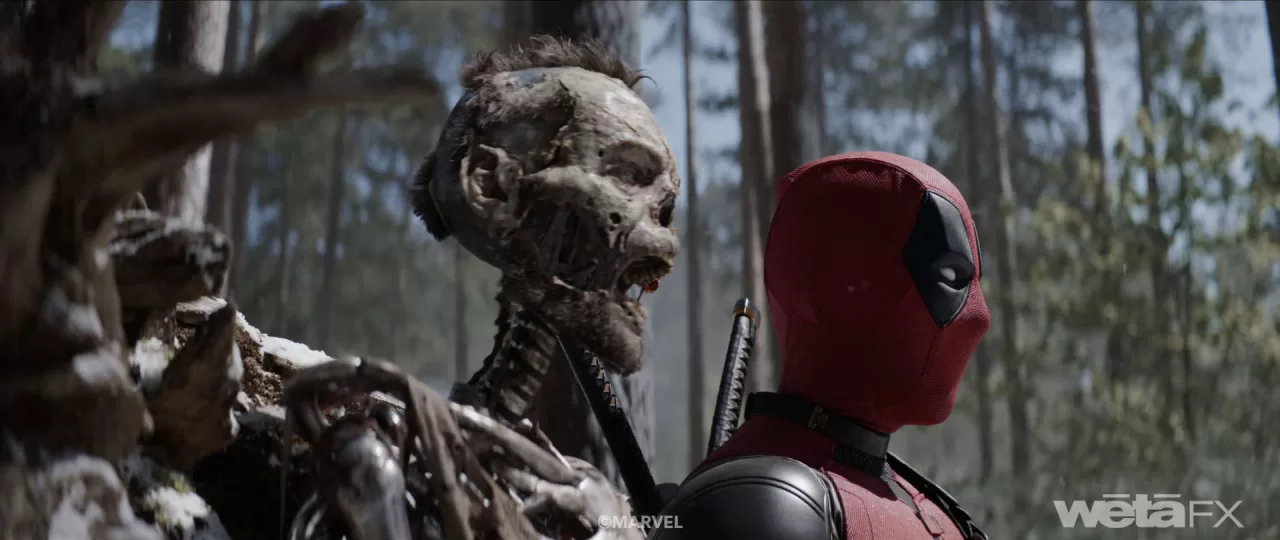
Is there something specific that gives you some really short nights?
Not on this project. We had a really great creative partnership with the client. Our creative conversations were a lot of fun and the show was very smooth. It was managed very well.
What is your favorite shot or sequence?
Personally, it was the post credit scene with Chris Evans. I had been working on the show for a while and they sent us an early version of the film and I did not see it coming. I turned to our producer and told him, “We have to work on that!”
What is your best memory on this show?
My best memory is sitting with the team of artists in my office as they say some of the most inappropriate lines from the movie while trying to still stay professional.
How long have you worked on this show?
We worked on the show for about 8 months.
A big thanks for your time.
WANT TO KNOW MORE?
Weta FX: Dedicated page about Deadpool & Wolverine on Weta FX website.
© Vincent Frei – The Art of VFX – 2024




